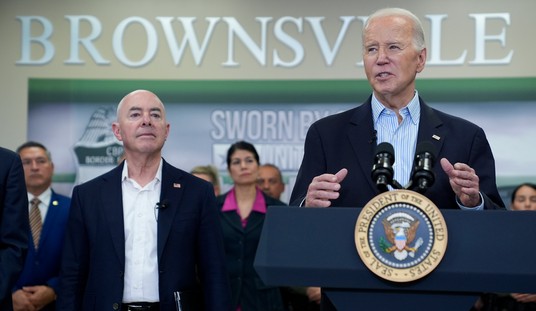This column appeared first in THE DAILY BEAST.
Exhilarated by the record number of women elected to both the House and Senate in 2012, giddy commentators have begun suggesting that increased representation by females could cure the poisonous polarization in Washington and repair the broken institutions of our government. A more sober, comprehensive analysis, however, reveals no historical or logical basis to assume that the much heralded influx of female politicos means an automatic improvement in the dysfunctional performance of the legislative branch.
The gloom surrounding the upcoming budget, gun control, and confirmation battles seems so pervasive, in fact, that some progressive observers will grasp at even the most dubious grounds for encouragement. In a much discussed posting for Time magazine under the headline “Would More Women in the Senate Mean Less Gridlock?” Judith Warner claims that a majority of females, (as opposed to the 20 percent now seated in the “world’s greatest deliberative body”), would automatically bring less “partisan grandstanding as their majority male colleagues.”
Sen. Barbara Mikulski (D-Md.) insists that had women been running the Congress there would have been no “fiscal cliff” since “we don’t believe in the culture of delay.” Sen. Claire McCaskill (D-Mo.) told an approving Diane Sawyer on ABC TV that women in politics are “less confrontational” while Sen. Dianne Feinstein (D-Calif.), never known as the shy, accommodating type herself, said they are more effective because “we’re less on testosterone.”
Even Peggy Noonan, the conservative columnist who once wrote speeches for the unashamedly macho Ronald Reagan, seemed to agree that the women senators seemed “refreshing” and saw their presence “as to some degree an antidote to the roughness and pointless ego of the Senate.” Sen. Kay Hagan (D-N.C.) explained the purported potency of that much needed antidote by declaring that “women have a tendency to work in partnerships, and that’s something I think the American public would really appreciate us doing, working across the aisle.”
None of these happy pronouncements cited examples of this sort of collaborative, constructive female legislative leadership in either the recent or distant past. In her short-lived speakership, for instance, Nancy Pelosi achieved a reputation for many things, but “working across the aisle” wasn’t one of them: she won not a single GOP vote for either the stimulus package or the Obamacare reforms. On the Senate side, the “Maine Girls” (Republican Sens. Susan Collins and Olympia Snowe) won praise as moderate problem-solvers, but from the other edge of the continent the “California Girls” (Democratic stalwarts Barbara Boxer and Dianne Feinstein) emphatically did not. (Very few colleagues in either party would croon along with the Beach Boys that “I wish they all could be California Girls.”)
Recommended
Gender differences never really identify political performance or predilections: there’s as much temperamental difference between the genial Sen. Mary Landrieu (D-La.) and the pugnacious “Battling Barbara” Mikulski, as between the courtly Lamar Alexander (R-Tenn.) and the flame-throwing Rand Paul (R-Ky.).
In this context it’s worth remembering that one of the most polarizing and truculent of all legislators of the past 50 years, noted for frequent verbal abuse of both colleagues and staff, also happened to be a feminist icon: Bella Abzug, the big-hatted harridan from the Borough of Brooklyn.
Around the world, some female politicians have won praise for their heroic leadership in times of danger and discord, like Britain’s Margaret Thatcher or Israel’s Golda Meir. But neither of these fierce, formidable ladies earned recognition for a collaborative, nonconfrontational style, and both found themselves forced from office by disgruntled dissidents in their own parties. Other women who have led major governments became notorious for ferocious, uncompromising, often disastrously willful leadership, like India’s Indira Gandhi or Argentina’s currently embattled President Cristina Kirchner—hardly exemplifying the collaborative, accommodating approach so lavishly praised by estrogen-is-the-answer advocates.
In today’s domestic politics, mainstream media also prove shamelessly selective in applying their female supremacist approach. While suggesting that more women in Congress would automatically clean up the D.C. mess, few commentators seem to have in mind more House members such as the staunchly conservative Michele Bachmann or more senators, or potential senators, like Alaska’s Sarah Palin—who reportedly is mulling a 2014 challenge for a seat currently occupied by shaky Democrat Mark Begich.
Critics maintain that politicians like Bachmann and Palin, not to mention trounced GOP Senate candidates
That argument, based upon the famous “gender gap” in all recent elections, applies only to single females and not to those who are married. Exit polls show that the crucial Democratic edge with women voters is entirely an edge with single voters, since the majority of married women (who are nearly 60 percent of all female adults) regularly prefer Republicans. Women who are married may well prove less likely to feel the need for activist government and potential public aid than women facing life’s challenges on their own. In 2012 married women gave a comfortable 7 percent edge to Mitt Romney, and in 2008 they chose John McCain 53–47 percent. In 2004 married females went even more decisively (55–44) for George W. Bush.
The heavily Democratic leanings of the women in Congress—only a third of the ladies in the House and a fourth of those in the Senate align with the GOP—don’t so much reflect the outlook of women in general as they do of the single-female minority, a minority amounting to only 23 percent of the overall electorate that chose Barack Obama in 2012 by a ratio of better than 2 to 1, and assured him the presidency.
Ironically, the female senators and representatives may resemble the single-female population in politics, but they bear little resemblance in terms of domestic arrangements: they’re nearly all married, with children, and with ardently devoted husbands. Of the 20 women senators, only five count as unmarried: the twice-divorced Debbie Stabenow of Michigan, the single Maria Cantwell of Washington, Susan Collins of Maine, and Barbara Mikulski of Maryland, and the openly gay Tammy Baldwin of Wisconsin—who recently ended a 15-year relationship with her partner.
The predominance of married, multitasking, upper-middle-class supermoms among the most prominent women officeholders gives the lie to the notion that female candidates automatically express the interests of a powerless, downtrodden segment of society previously unrepresented in the corridors of power. The lady senators may share political opinions with the single women who elected them, but they hardly share life experiences. Like most of the conspicuously successful individuals of both genders in every field, they for the most part enjoy stable, conventional family lives and strong educational backgrounds.
Contrary to the rousing rallying cry of the feisty Mikulski—“Square your shoulders, put on your lipstick, and fight the revolution!”—the 2013 net increase of three female members in the U.S. Senate hardly amounts to a revolutionary change. The election of more women may indeed provide more lipstick and feminist rhetoric, but it’s hardly a guarantee of less gridlock and partisanship, or the signifier of some startling new perspective.























Join the conversation as a VIP Member